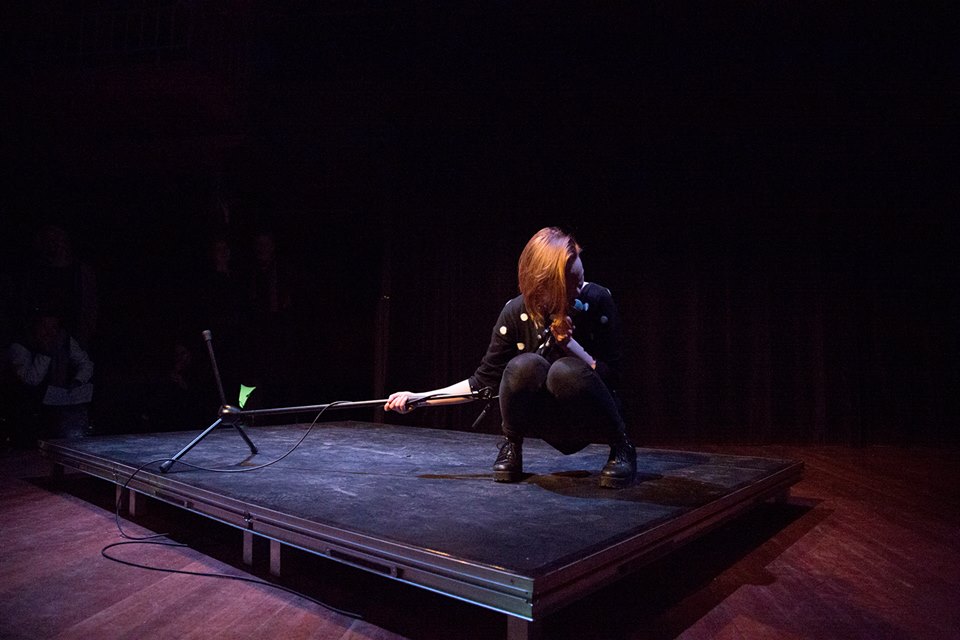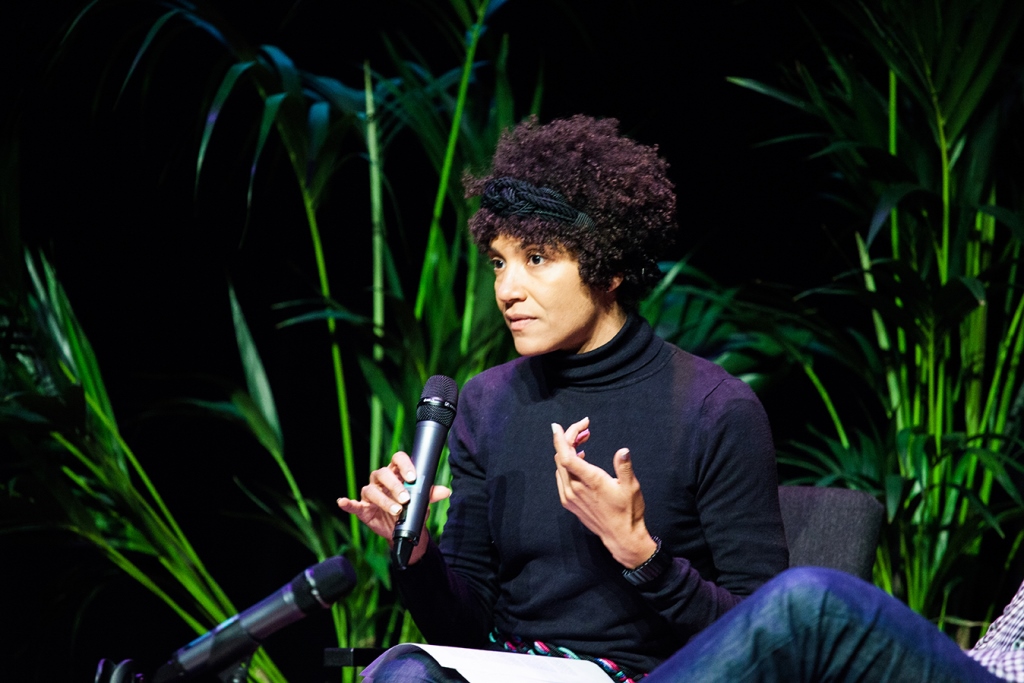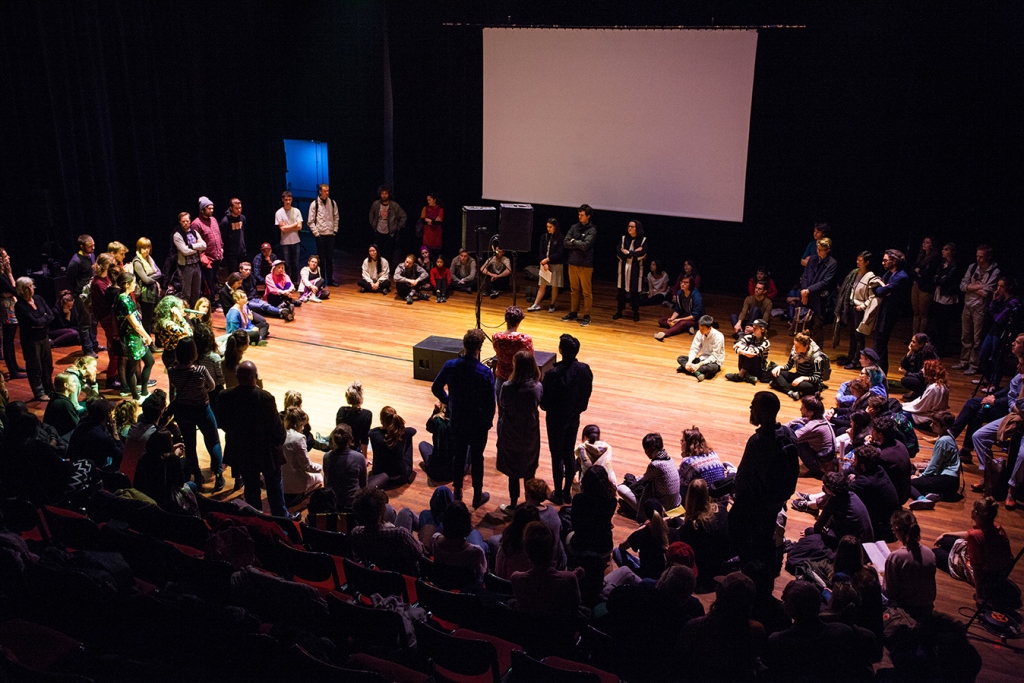
Looking at art trough the lens of theatre

Two more days to go: Are you alive or not? At De Brakke Grond.
“It is hoped that these chapters might give momentum to rethinking the history of twentieth-century art through the lens of theatre rather than painting or the ready-made.” It is this statement in which art historian Claire Bishop summarizes the aims of her book Artificial Hells – a critical history of those forms of art that usually get labelled “participatory” – that is taken as a starting point for ARE YOU ALIVE OR NOT? This project, which is a collaboration between the Studium Generale of the Gerrit Rietveld Academie and Rietveld Uncut, takes place from March 18 until March 22 at De Brakke Grond, Amsterdam.
First and foremost, the project is aimed at the students of the Gerrit Rietveld Academie itself: the Studium Generale, as could be expected, is a mandatory component of all study programmes at the Rietveld. For the past three months, the Studium Generale has offered them the opportunity to become more acquainted with the ideas of thinkers who have commented on (participatory forms of) theatre, like Antonin Artaud, Augusto Boal, Bertolt Brecht, and Jacques Rancière. However, despite its being aimed primarily at students of the academy, ARE YOU ALIVE OR NOT? is also accessible for anyone who is interested – and rightly so, since it would certainly be a shame not to open up such a varied and appealing programme to the public at large.
Apart from the vernissage, which took place last Wednesday already, the project consists of four separate day programmes, all compiled by an external curator. Furthermore, some thirty-five student projects, both individual and collaborative, will be shown on various locations in De Brakke Grond.

The first day programme was conceived by Claire Tancons, a New Orleans-based writer and curator with a pronounced interest in the carnivalesque. It should be noted, however, that there was little to nothing carnivalesque about Rana Hamadeh’s impressive and rather baroque sound play Can You Pull in an Actor With a Fishhook or Tie Down His Tongue With a Rope?, the theatrical aspects of which the artists subsequently discussed at length with Theodor Ringborg, a writer and curator. The second part of the day, ‘Carnivals of Grief and Shrines to Democracy’ followed a different formula: after three distinct yet related talks by artists Florian Göttke (who presented his research into pictures of burning effigies), academic Jack Santino (who spoke about spontaneous shrines), and Tancons herself, a discussion between the three of them essentially rounded off the day.

Artists and theatre maker David Weber-Krebs curated the second day programme, which was titled On Enclosed Spaces and the Great Outdoors. The programme seems to share with the trendy and very en vogue philosophies often gathered under the common denominator of “speculative realism” a distaste for anthropocentrism and – naturally – a keen interest in all things non-human. Amongst many other things, attention was paid to animal agency (Maximilian Haas), speculation (Mette Ingvartsen and Weber-Krebs himself), and the concurrent solar eclipse (Andrea Boži?).
Dear Friends, or Enemies Perhaps, the third day programme, curated by Joanna Warsza, is titled after a quote by Marinetti – who blurred the categories of passive and active spectatorship in his Futurist serates. The programme features among other things, a discussion between Warsza and Claire Bishop, a screening of provocative director Milo Rau’s Moscow Trials (dealing with the juridical case of Pussy Riot) commented upon by curator Ekaterina Degot, a lecture on political theatre by Florian Malzacher, and a performance by the famous Russian collective Chto Delat?.
Finally, the last day will by curated by Claire Bishop herself. Is Everyone a Performer? will centre around notions of amateurship and deskilling as related to performance. There will be a lecture on the “post-punk commons” by Gavin Butt, a demonstration-lecture by choreographer Alexandra Pirici, a silent powerpoint presentation by Jesse Darling, and a spokaoke – a “medley” of famous speeches – by Annie Dorsen. Diversity galore!
In his well-known essay The Emancipated Spectator from 2011, the aforementioned French philosopher Jacques Rancière essentially argues that the spectator – who, in most twentieth-century theatre discourse, is conceived of as utterly passive; he or she is to be mobilized by the director and the actors – fulfills an essentially active role: it is spectatorship that constitutes the theatre. The spectator, according to Rancière, is in that sense always already emancipated. The essay, therefore, reads first and foremost as a charge against those blasé directors and intellectuals who are arrogant enough to assume that the public is unable of emancipating itself.
Rancière’s point is well taken, but what is problematic about his account of spectatorship is that it ends up relegating everything and everyone to one single category – “active” – rather than really scrutinizing the very different roles played by spectators and actors (pun intended). In its diversity, then, this project is a welcome attempt at rethinking these roles in all of their complexity, and at re-opening the discourse on the politics of spectatorship, in theatre as well as in the visual arts. Are you alive or not? Yes.
Are you alive or not?
De Brakke Grond, Amsterdam
19.3 – 22.3.2015
Steyn Bergs


